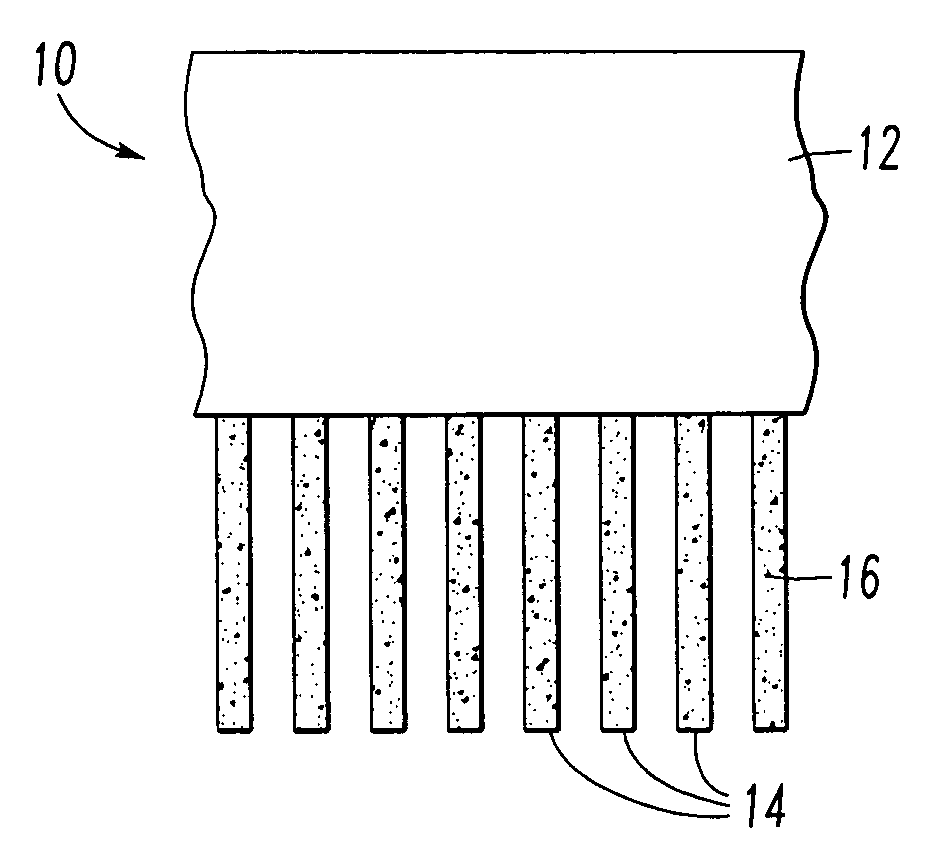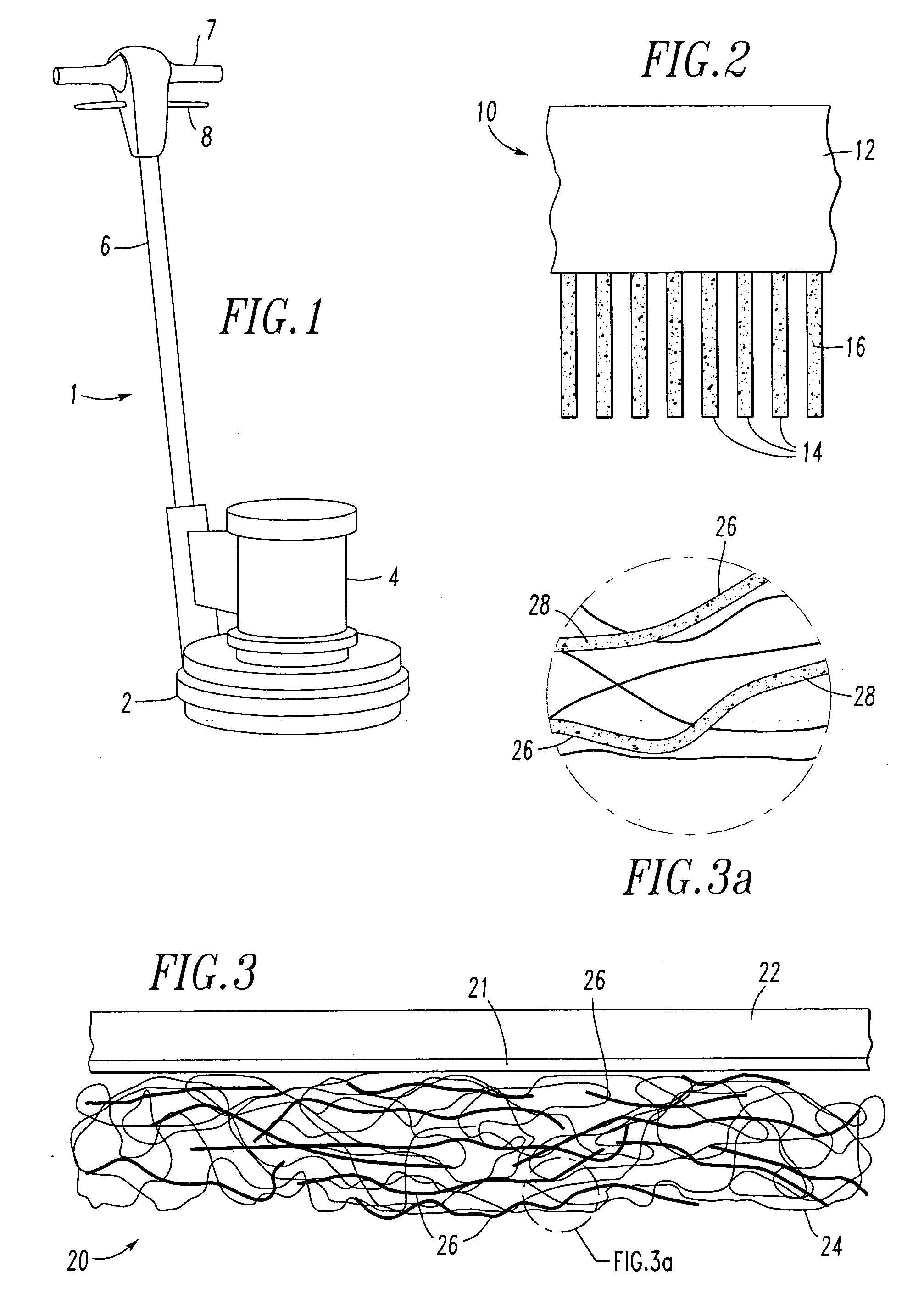Once exposed to
pedestrian traffic and fork lifts, tow motors, and other wheeled vehicle traffic, the polished concrete or terrazzo floor slowly loses its gloss.
Gloss loss in traffic is due to abrasion, spills of mildly acidic materials, such as
citrus juices, carbonated beverages, and even
acid rain, and the deposition of soils on the polished surface.
Routine cleaning of the floor will remove the latter and it may also prolong the time that the gloss remains since it removes abrasive soils, but gloss loss is inevitable for a floor open to traffic.
These resilient flooring materials and their finishes are relatively soft, making them readily scuffed, scratched, and marred, and the finishes are chemically sensitive to solvents and alkaline materials.
The mild chemicals and non-aggressive mechanical agitation of the cleaning equipment is less than optimal for concrete and terrazzo flooring, because of their heavier loadings of more aggressive traffic, but cleaning by the techniques developed for resilient flooring and finishes is sufficient.
These gloss-restoration methods are not effective for non-resilient flooring.
Spray buffing is ineffective in restoring the gloss of these hard floors, and so it is not used.
Non-resilient polished concrete and terrazzo floors do not respond to high speed burnishing gloss restoration because of their higher
hardness and the reduced abrasion (greater softness) and low pressure applied to the high speed burnishing pad.
Spray buffing is the most aggressive of these routine procedures in that it abrasively removes the greatest amount of polish.
It is labor intensive (expensive) and results are dependent on the operator's skill, so in most facilities it is either no longer practiced or is done only on a monthly or even less frequent schedule.
Though the application of a floor finish to polished concrete or terrazzo floors is possible, as taught in the Gehman reference, this option negates the greater durability and resistance to traffic damage of these non-resilient floors, making them unsuitable for their heavier traffic loadings.
The gloss of the relatively soft finish is lost much more rapidly than the gloss of the inherently more durable non-resilient surface, making it necessary to frequently strip off the old finish and apply more.
The product literature and
package labeling warn against the routine use of these aggressive pads and brushes because they will dull, scarify, and scratch the flooring, drastically reducing the gloss that can be attained even after
reapplication of multiple coats of finish.
The habits and experience from the entire evolution of cleaning maintenance of resilient floors which has been transferred to non-resilient flooring has limited the use of aggressively abrasive pads and brushes to non-routine cases of heavily soiled concrete (for example, the removal of oils, paints, or exhausted sealer films).
Even on these surfaces that would not be expected to be damaged by the aggressive brushes, they are not used in routine maintenance.
Highly aggressive maintenance equipment, such as abrasive pads and brushes, bear explicit warnings against their routine use because of the damage that they may do to the floor.
These warnings also caution against their routine use on non-resilient floors, including polished concrete and terrazzo, because of the anticipated danger of scarifying and reducing the gloss of these expensively produced floors.
This alternative is often not practicable because of its high cost for labor and materials, including the
diamond grinding blocks, the attendant generation of heavy concrete dust or a water / concrete
powder slurry that is not compatible with a building in service, and the prolonged time the floor must be taken out of service.
 Login to View More
Login to View More  Login to View More
Login to View More 

